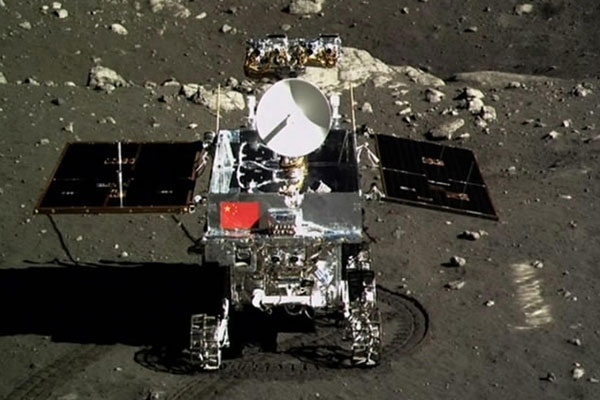 |
|
The photo of the Yutu moon rover taken by the camera on the Chang'e-3 moon lander during the mutual-photograph process after the successful landing of the moon probe on the moon on Dec 15, 2013. [Photo/Xinhua] |
BEIJING - China is planning to be the first country to land a lunar probe on the far side of the moon, a Chinese lunar probe scientist said Tuesday.
The mission will be carried out by Chang'e-4, a backup probe for Chang'e-3, and is slated to be launched before 2020, said Zou Yongliao from the moon exploration department under the Chinese Academy of Sciences at a deep-space exploration forum Tuesday.
Zou said government organs have ordered experts to assess the plan over the past 12 plus months. "China will be the first to complete the task if it is successful."
The State Administration of Science, Technology and Industry for National Defense announced earlier this year that Chang'e-4 will be launched before 2020.
The far side of the moon, or "dark side of the moon" as it is more commonly called, is never visible to Earth because of gravitational forces. According to Zou, the far side of the moon has a clean electromagnetic environment, which provides an ideal field for low frequency radio study. "If we can can place a frequency spectrograph on the far side, we can fill a void."
Zou said Chang'e-4 is very similar to Chang'e-3 in structure but can handle more payload. It will be used to study the geological conditions of the dark side of the moon.
China plans to launch its Chang'e-5 lunar probe around 2017 to finish the last chapter in China's three-step (orbiting, landing and return) moon exploration program.
Li Chunlai, one of the main designers of the lunar probe ground application system, said Chang'e-5 will achieve several breakthroughs, including automatic sampling, ascending from the moon without a launch site and an unmanned docking 400,000 kilometers above the lunar surface.
Chang'e-5 will also have a new launch site and launch rockets, said Li.
Chang'e-3 landed on the moon in 2013, making China the third country after the Soviet Union and the United States to soft land a spacecraft on lunar soil.
